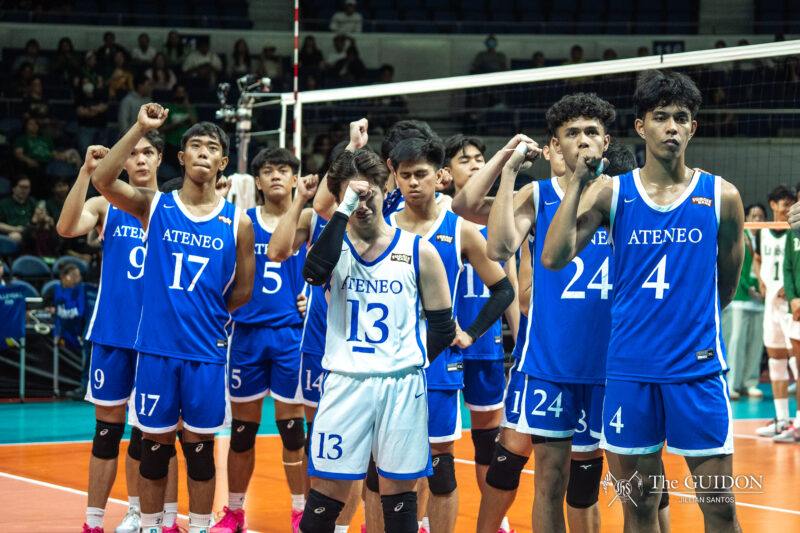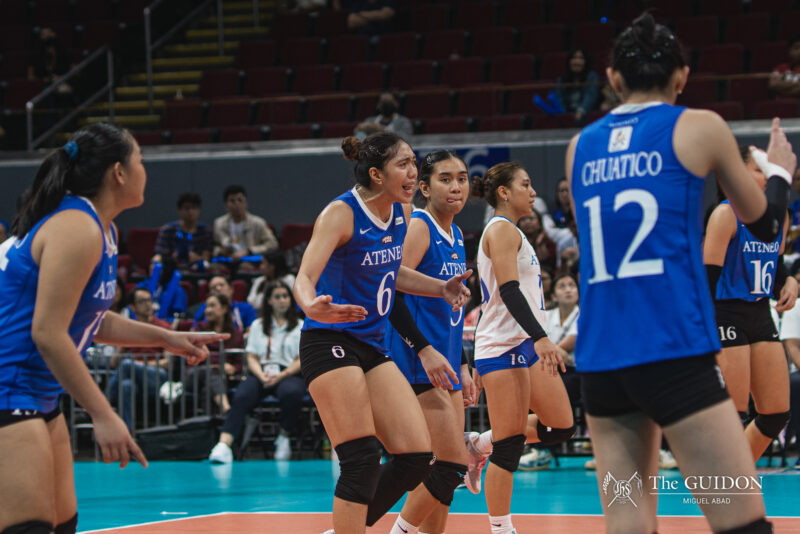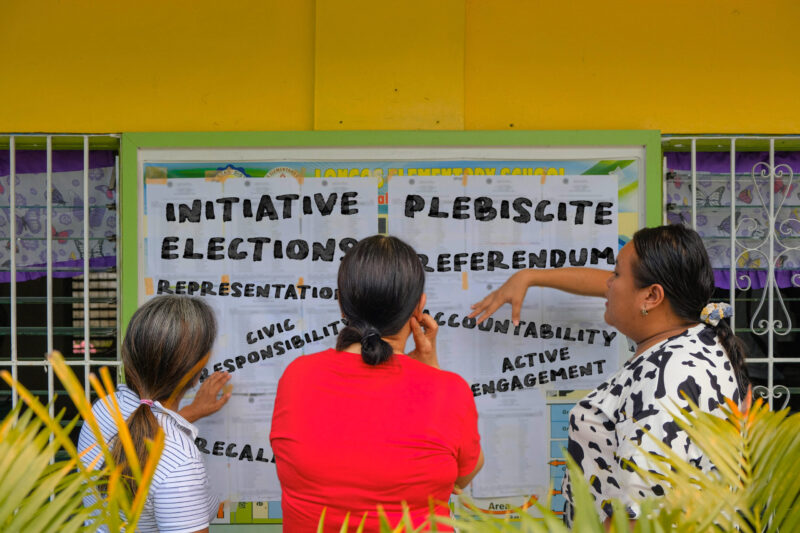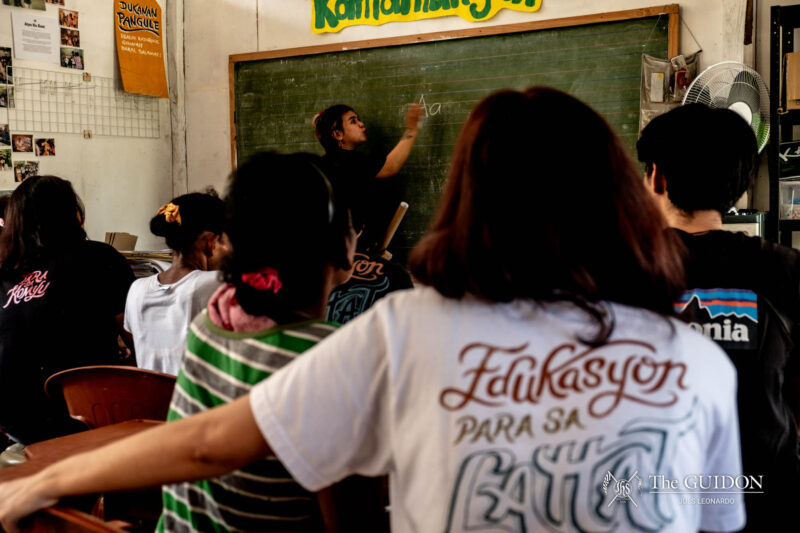Humble beginnings
With most members of her family playing tennis, the passion for the sport came naturally to Lady Netters Captain Michelle Pang (III BS CTM).
“I got into the sport because my whole family plays tennis. My mom taught my dad, who eventually taught me and it became something I loved doing,” she says.
By age nine, she became serious about playing and joined tennis tournaments.
And after gradually making a name for herself in the sport, Michelle became a top recruit when she was about to enter college.
“Coaches from different schools were talking to me and my mom [but] I finally chose Ateneo in the end,” she says.
Force to reckon
Since then, she has evolved into a dominating force in the tennis circuit–emerging as the University Athletics Association (UAAP) Rookie of the Year in Season 69, the Most Valuable Player in Season 70, and bringing home a bronze medal in the 2007 Southeast Asian Games, among other awards.
In fact, this current second seed of the Philippines for women’s tennis has yet to lose a game in the University Athletics Association of the Philippines.
Asked if these add to the pressure of playing, especially representing the Ateneo and being the Lady Netters’ team captain, Michelle admits, “It adds a lot of pressure because everyone has expectations from [me] and I know that my coach as well as everyone else [in the team] counts on me.”
Learning curve
Despite the pressure, however, she is quick to point out that being team captain is a really good experience. She says, “leading the team has been such a wonderful adventure because [I] guide them not only on-court but also off-court.”
And despite her numerous accolades, she is still continuously learning especially now that she is the leader of the team. “It’s a mutual learning experience where we all learn from each other,” she says.
Worthy investment
Coming back to the campus all the way from the Rizal Memorial tennis courts, Team Captain Ayo Canlas (II BS ME) discusses his most recent game. Entering the round of 16, he was severely beaten that day by De La Salle University’s Patrick John “PJ” Tierro, one of the best players in Philippine tennis today. His loss to Tierro gives him the extra push to improve himself further.
Ayo started playing tennis at the age of 12, during his Grade School years in the Ateneo. “I was trying out different sports, like football, basketball and swimming. Then I had a brief stint in the baseball varsity,” he recalls.
It turned out that Ayo was not satisfied playing any of those sports, and at one point he got frustrated.
“Sometimes, in these [team] sports, even when you give it your all, you still come up short,” he says.
It was then that Ayo was introduced to tennis. “My mom was working at the Edsa Shang, and so I hung out there a lot. One day in the tennis court, I was inspired by this really good player playing tennis,” he says.
Ayo then started learning about the sport, joining tennis camp that summer.
Catching up
Most tennis players start honing their skills at a much younger age, so Ayo immediately knew that he had a lot of catching up to do.
“I wanted to make up for lost time, and so I practiced every day, and joined as many tournaments as I possibly can. Some of the tournaments I’ve joined even reached as far as Cebu City!”
Eventually it all paid off, as he was ranked first among all Philippine players in both the 14-under and 16-under categories, joining international tournaments such as the Rice Bowl in Hong Kong, as well as the Junior Davis Cup in Sri Lanka respectively.
The Rice Bowl was one of Ayo’s most memorable tournaments, as the Philippines placed third among 24 teams from different nationalities. “We definitely played above our expectations back then,” he says.
Headstart
Unlike Canlas, Co-captain Julian Lagman (IV AB MEco) began playing tennis at a much younger age of six, but was just playing casually. “My Dad frequently played tennis, and eventually I was played with him too,” he says.
It was at the age of 14 when Julian started joining tennis tournaments in his native province, Cebu. Soon after, he won his first tournament in neighboring Bacolod City. From there, he excelled further in the sport, his rank rising within the top 15 nationwide in the 16-under and 18-under age groups.
Coming from Sacred Heart, a Jesuit school in Cebu, Julian wanted to enter a university with the same background, and so he joined the Ateneo.
Shared Responsibilities
Michelle’s leadership style, she says, demands nothing short of excellence from herself and her teammates. “As a captain, you should always set a good example and show your strength…endure the problems and show your team you can overcome it because that is how you earn your team’s respect.”
Given all her accomplishments, Michelle reveals that being a successful tennis player generally requires three things: a strong will, determination, and mental preparation.
“[Tennis] is a very prestigious sport where you fight both yourself and your opponent, because first it’s [against] yourself – mentally, then when you overcome that, you also have [to fight] the person across the net.”
Beyond the court
For Ayo leadership goes beyond the court. “We are basically tasked to help in communicating to the team members, and in training as well.”
In addition, they all try their best to help the team in any way they can. They are the ones who plan parties and dinners, usually after games, and other bonding sessions for the team.
“We lead by example, because the expectations are higher for us as captains of the team,” Julian says.
As both teams finished in the lower half of the standings in the UAAP, these captains have a lot more work to do if they are going to lead their teams back to respectability. More than anything, it is a challenge on their part to continue playing with a sense of urgency coupled with a win-now attitude.






